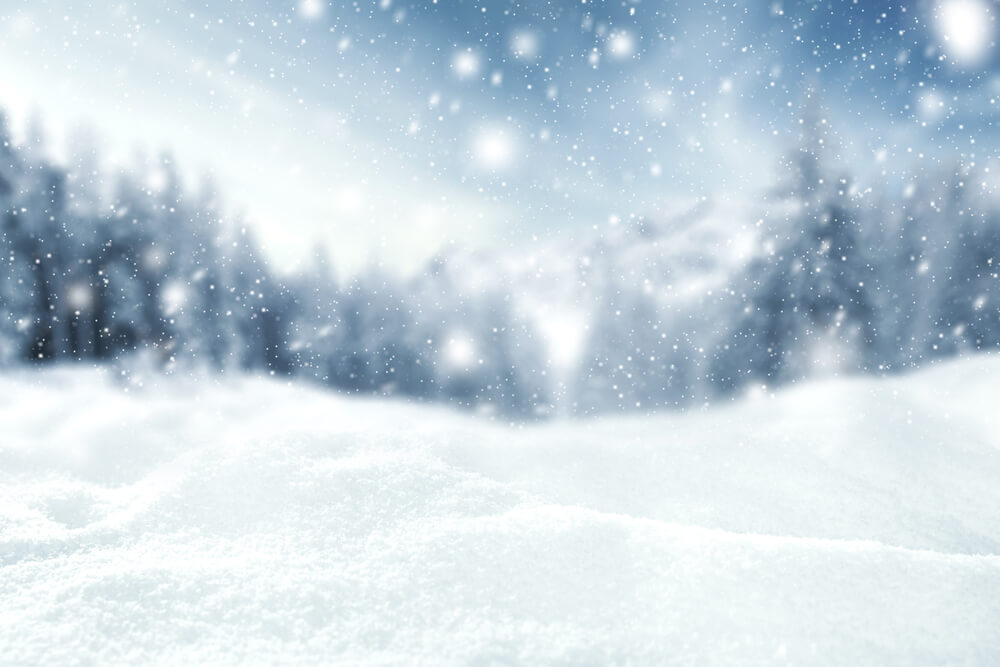XNUMX interesting and unexpected facts about snow
For some, snow can be an inconvenience, but for others its presence is like magic! You can race along the sparkling white hill on skis and snowboards, and sculpt different little people out of crystal fluff. And when everything is swept away, children are happy to have an extra day off from school. All this can give snow. But there are facts about this magic that many do not know about. Edition fox weather collected 7 of them - the most interesting and unexpected.

Photo: Shutterstock
1. For snow to form, there must be pollen or dust in the air.
The first step in the formation of a snowflake is the freezing of a drop of extremely cold water into a pollen or dust particle in the sky. This creates an ice crystal.
The water vapor then freezes on the primary ice crystal as it sinks toward the ground, forming new crystals—the six sides of the snowflake.
2. All snowflakes have 6 sides
The snowflake is made of frozen water, so it has two hydrogen atoms and one oxygen atom (H2O). Water molecules are V-shaped, so when they align and freeze together, they form a hexagon shape.
When more water molecules are added to the snowflake, they are evenly added to the hexagon so the shape doesn't change. Instead, the snowflake grows in size while maintaining six sides.
3. No two snowflakes are alike
Each snowflake follows a different path from the sky to the ground and therefore encounters different atmospheric conditions on the way down.
On the subject: Christmas on the Beach and Sand Snowmen: Weird Florida Holiday Traditions
Thus, according to the National Weather Service, each snowflake tends to look unique. It vaguely resembles everything - from prisms and needles to the familiar lace pattern.
4. Snow can fall at temperatures above freezing
Snow can fall at surface temperatures up to 50 degrees Fahrenheit (+10 Celsius), but only under suitable environmental conditions.
This can happen if the warm layer of air near the surface is very shallow, so snowflakes falling from the clouds do not have time to melt as they approach the ground.
When snow falls with temperatures above zero, it will drop. If it goes very hard, the air will reach 32 degrees (0 Celsius). This is due to the cooling processes.
The best chance of seeing snow when temperatures are above freezing is when the air is very dry and the snow is quite heavy, because more evaporation will occur in that dry air.
5. It's never too cold for snow.
Although technically snow is possible at any temperature, even above zero, however, it will be too warm for it to reach the ground.
But it's never too cold for snow. Whether it's 30 degrees below zero or 30 degrees above zero, snow is possible.
6. Snow is not white
It may appear white when it falls or lies on the ground, but in fact the snow is translucent because it is made up of tiny ice crystals, and they are almost transparent like glass.
You may be interested in: top New York news, stories of our immigrants and helpful tips about life in the Big Apple - read it all on ForumDaily New York
Light bends as it passes through a translucent material, so when it hits a snowflake, it bends and scatters in the visible light spectrum along the edges of each crystal.
This scattering results in white light, much like a pile of sugar or salt appears white, even though each individual crystal appears transparent.
7. A snowflake reaches the ground in about 1 hour
Although it depends on the size and mass of each snowflake, as well as on environmental conditions, most snowflakes fall at speeds between 1 and 4 miles (1,6-6,4 km) per hour, according to the United Kingdom Meteorological Office.
The largest and heaviest snowflakes can reach speeds of up to 9 miles (14 km) per hour, but the average snowflake falls to the ground at a speed of about 1,5 miles (2,4 km) and reaches the ground in about an hour.
Read also on ForumDaily:
Top 22 best Christmas movies to create a festive mood
Winter charm: 17 frozen waterfalls in the USA worth seeing
Give not things, but emotions: the best gifts-impressions for the New Year
Seven winter car tricks to save time and effort
Christmas on the Beach and Sand Snowmen: Weird Florida Holiday Traditions
Subscribe to ForumDaily on Google NewsDo you want more important and interesting news about life in the USA and immigration to America? — support us donate! Also subscribe to our page Facebook. Select the “Priority in display” option and read us first. Also, don't forget to subscribe to our РєР ° РЅР ° Р »РІ Telegram and Instagram- there is a lot of interesting things there. And join thousands of readers ForumDaily New York — there you will find a lot of interesting and positive information about life in the metropolis.











